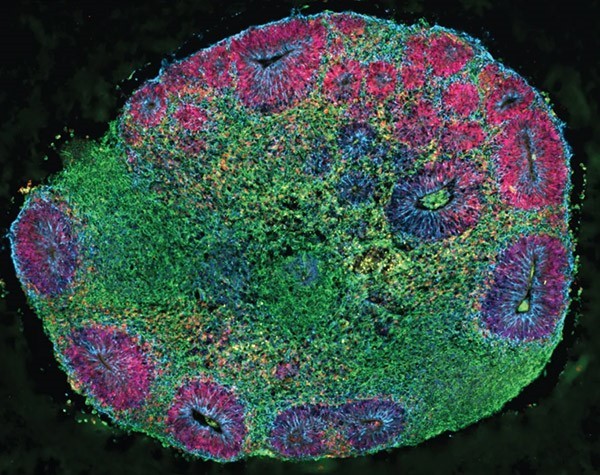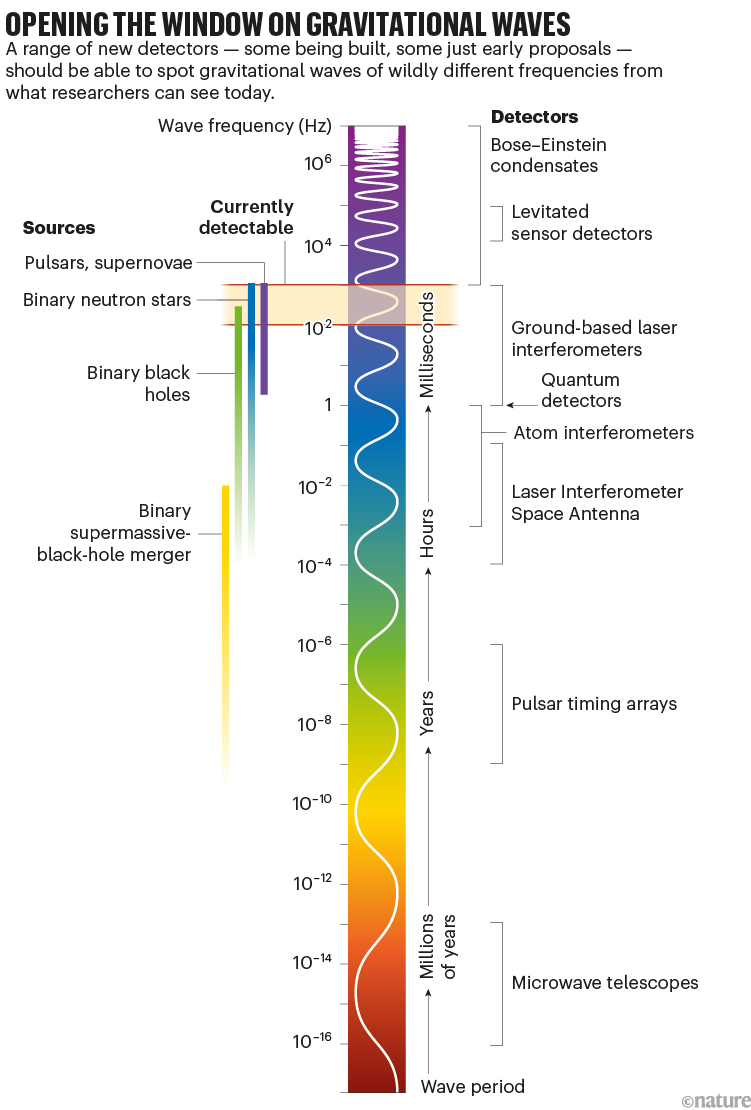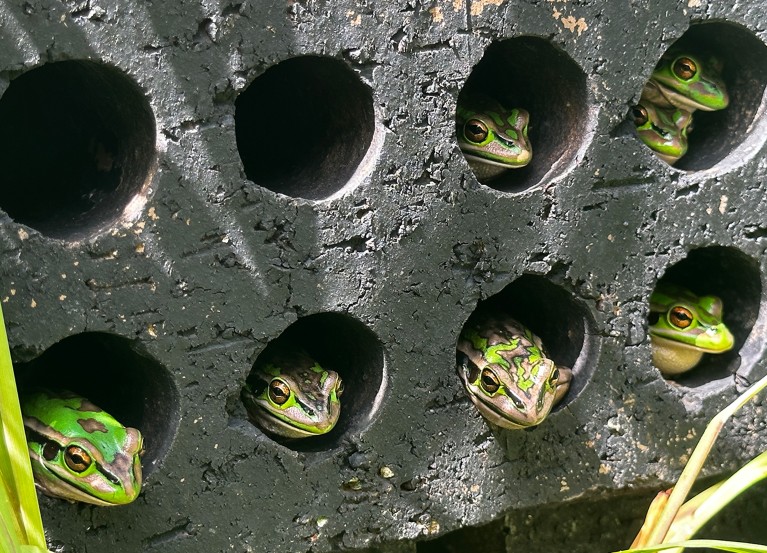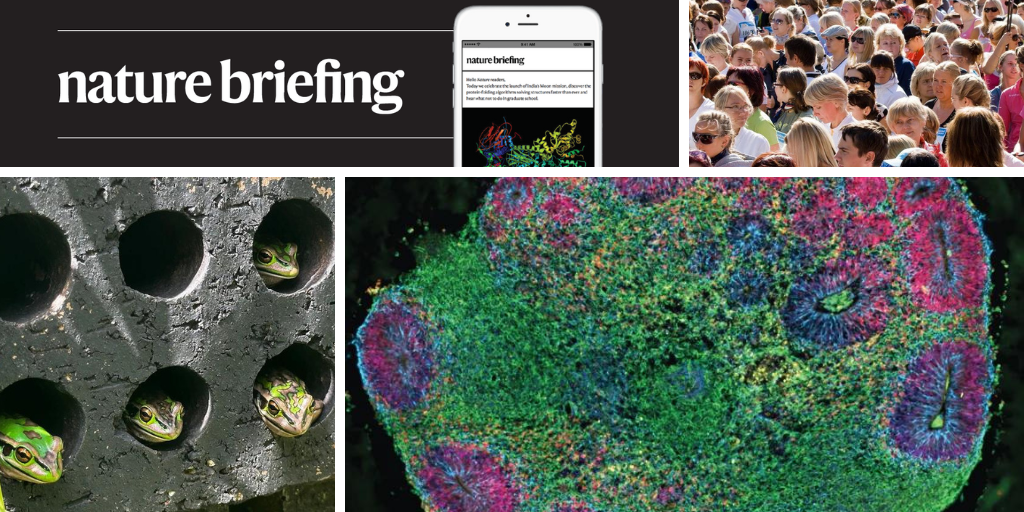Hello Nature readers, would you like to get this Briefing in your inbox free every day? Sign up here.

Several donors’ cells were first grown individually before being combined into a single brain ‘organoid’. This stops faster-growing cell lines from smothering slower-growing ones. (N. Antón-Bolaños et al./Nature)
Researchers have grown the first 3D model brains that include an array of cells from multiple people. The donor stem cells are bathed in a chemical cocktail that encourages them to mature into various brain cells. The resulting ‘Chimeroids’ could help to reveal why drugs have distinct effects on different people. Test experiments showed for example that ethanol, the toxin that causes fetal alcohol syndrome, reduced the number of cells from just one donor’s cell line.
Get the expert view from developmental neuroscientist Aparna Bhaduri in the Nature News & Views article (7 min read, paywall)
The 210,000 Estonians who contributed samples to the country’s biobank — around 20% of the adult population — were given the opportunity to learn about some of their disease risk, Neanderthal ancestry or ability to handle caffeine. So many people flocked to the online portal that parts of it crashed. The project is one of the world’s biggest efforts to return genetic results to research participants — most biobanks do not provide such information. “The hope, anticipation and expectation is that this should improve people’s health care,” says clinical pharmacologist Dan Roden.
The highest court in the United States has ruled that the country’s government can keep talking to scientists and social-media firms to curb misinformation on subjects such as elections and vaccines. The decision is a win for researchers who continue to face lawsuits alleging that they worked with the government to censor conservative opinions. The court has yet to rule on a related case focused on state regulations that attempt to limit social-media companies’ ability to regulate conversations on their platforms.
Scientists are hoping that the next UK government, which will be elected next week, will return stability after more than a decade of upheaval. One of the most talked-about issues has been the recently-tightened visa rules, which have drastically reduced the number of international applicants to UK universities. Many scientists would also like to see an increase in research funding, which is currently around 2.9% of gross domestic product.
Features & opinion
Scientists are developing ways to spot those ripples in space-time that are invisible to current gravitational-wave-hunting facilities such as LIGO.
1. Ultra-long waves could be detected over many years by measuring the distance between Earth and stars called pulsars.
2. Telescopes are searching for patterns in the cosmic microwave background that would have been imprinted by gravitational waves in the early universe.
3. Observing atoms as they drop down a 1km-tall pipe could reveal waves coming from black hole collisions.
4. Desktop detectors for speculative high-frequency waves could reveal exotic physics right after the Big Bang.
5. A radical idea for spotting gravity waves involves putting a diamond crystal into quantum superposition — something that has never been demonstrated.

Becoming a father caused organizational-behaviour researcher Dritjon Gruda to recoil from the advice he had received from senior scientists: minimize time with your children and stay steadily focused on research. Instead, he decided to stop working weekends, stick to a 9-to-5 day and keep the laptop closed at home. “Did my career tank? Did I become less successful? Quite the opposite,” he writes. “This is down to, I think, my better work–life balance: I’m more productive in the limited time I devote to work.”
The UK Medical Research Council’s Laboratory of Molecular Biology (LMB) produced a dozen Nobel prizewinners and biomedical breakthroughs. “None of these discoveries was serendipitous,” argues a trio of researchers. They interviewed scientists and analysed decades of archival documents to identify some of LMB’s strategies for success:
• Promoting scientific diversity
• Fostering long-term loyalty
• Effectively managing scarce resources
• Establishing feedback between scientific questions and engineering-based technology solutions
• Prioritizing long-term goals over performance metrics
Image of the week

Figure 1 | Australian green and golden bell frogs (Ranoidea aurea). Waddle et al.3 constructed mini saunas using bricks inside a small plastic greenhouse. The warm environment enabled the frogs to clear a deadly fungal infection, and the animals gained resistance to reinfection by the fungus.Credit: Anthony Waddle
These endangered green and golden bell frogs (Ranoidea aurea) are relaxing in a mini sauna, a pile of bricks inside a cheap plastic greenhouse. The heat helps the animals to recover from chytridiomycosis, a deadly fungal disease that has been wiping out amphibian populations around the world. (Nature | 6 min read, paywall)
Out of all the ferocious predators out there, why do bears seem so cute and cuddly? Maybe it’s because their fluffy round ears and big nose remind us of dogs. Or maybe it’s their human-like appearance, as evidenced by a viral video of a sun bear that people thought was a person in a costume.
To keep this newsletter looking authentic, please send your feedback to [email protected].
Thanks for reading,
Katrina Krämer, associate editor, Nature Briefing
With contributions by Flora Graham, Gemma Conroy and Smriti Mallapaty
Want more? Sign up to our other free Nature Briefing newsletters:
• Nature Briefing: Microbiology — the most abundant living entities on our planet — microorganisms — and the role they play in health, the environment and food systems.
• Nature Briefing: Anthropocene — climate change, biodiversity, sustainability and geoengineering
• Nature Briefing: AI & Robotics — 100% written by humans, of course
• Nature Briefing: Cancer — a weekly newsletter written with cancer researchers in mind
• Nature Briefing: Translational Research — covers biotechnology, drug discovery and pharma


